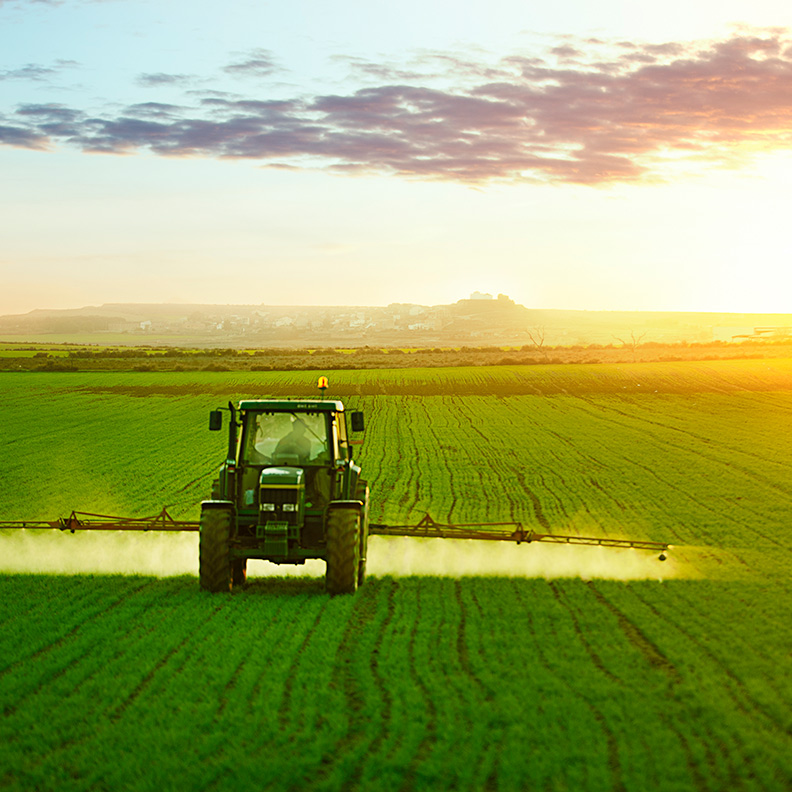Following a mild winter in the Midwest, planting season has gotten off to a strong start, with a number of crops ahead of their historical schedules. Recent rainfall has also alleviated drought concerns as crops have gotten into the ground, with the entire Corn Belt rated as neutral to wet in early May according to the NOAA Crop Moisture Index. Heavy rain in some parts of the region has led to a few planting delays, though farmers generally welcome the precipitation compared to the drier conditions we’ve seen the past few years.
The promising spring start provides optimism for the rest of the year, but several challenges remain, including production costs that have decreased slightly but remain elevated from several years ago1, which will keep margins compressed. Dairy farmers are also keeping a close eye on bird flu, as more than 50 U.S. dairy herds have seen cases since late March2. Additional on- and off-farm testing has been implemented to assure safe dairy products.
U.S. row crops
Farmers have made steady progress with planting so far. While the upper Corn Belt is slightly behind schedule due to heavy rain, the rest of the country is on a faster pace. The U.S. corn crop is 70% planted as of May 19, which is 1% below the five-year historical average. Soybeans are at 52%, which is 3% above the five-year average, and sugar beets are 98% planted, which is 17% above historical norms.
Prices for staple crops are up across the board also, with December 2024 corn sitting at $4.83 per bushel (up 1.9% since April 1), November 2024 soybeans at $12.16 (up 2.8%) and December 2024 wheat coming in at $7.29 (up 16.3% due to global production issues).
There are encouraging signs with anticipated yields as well. According to the USDA’s World Agricultural Supply and Demand Estimates (WASDE) report released on May 10, the U.S. corn yield is estimated at a record high of 181.0 bushels per acre across 90.0 million acres, which would be 2.1% higher than 2023’s record-setting 177.3 bushels per acre. If that happens, U.S. corn ending stocks will be above 2 billion bushels for the second straight year and the ending stock-to-use ratio will be 14.2%, the highest since 2018’s 15.5%. The U.S. soybean yield is estimated at 52.0 bushels per acre on 86.5 million planted acres. The stocks-to-use ratio is estimated at 10.22%, which would be the highest since 2019’s 13.29%. U.S. soybean exports are estimated at 1.825 billion bushels, up from 1.7 billion bushels in 2023. Total use is estimated to be nearly 6% higher year over year.
U.S. livestock and dairy
The price for August 2024 feeder cattle is up 2.9% since April at $259.10 per cwt. July Class III milk is at $20.50 per cwt, up 15.6% since April.
With steady rain in the region so far, pasture conditions have been promising, with 49% rated “good” or “excellent” by the USDA, up from 37% last year. Certain areas have been even better, such as North Dakota with 68% of pastures currently rated “good” or “excellent” and South Dakota, which is at 83%.
Pork exports have been strong so far this year, with the U.S. shipping out 1.802 billion pounds in the first quarter, which is up 8% over last year. That has been fueled by increased demand in South Korea and Mexico. Beef exports haven’t been as strong, with 732.8 million pounds shipped in the first quarter, down roughly 6% from 2023. However, beef demand typically peaks around Memorial Day, so a rebound could be in store as we head into the summer.
Local ag outlooks
Brad Brekken, Ag Banker, Crookston, MN
We have had a good start in the Crookston area, with most sugar beets and wheat planted and emerging, and soybeans, edible beans and corn now being planted. We’ve had some good spring rains the past couple of weeks, diminishing the drought issue. As usual, the biggest concern seems to be commodity prices, although land costs are a close second these days. Processing of the 2023 sugarbeet crop is almost complete, with more beets being discarded due to spoilage than normal.
Greg Edland, Ag Banker, Carrington, ND
We’ve had ample moisture throughout the area, which is a reason for optimism. Small grains are all seeded, and corn and soybeans are 10-50% planted. Like in other regions, commodity prices are the biggest concern here the rest of the year.
Global agriculture
Ukraine spring planting is progressing well with approximately 77% of the planned area planted with corn, wheat, barley, peas, oats, buckwheat and millet, according to the Ministry of Agrarian Policy and Food. The estimate includes 9.67 million acres of corn.
Ukraine, as well as Russia and Kazakhstan, was hit with a historically late frost in May, which will hurt both wheat and rapeseed yields3.
Argentina is suffering from corn stunt, which is a disease spread by small insects known informally as leafhoppers. The disease has been detected in southern portions of Florida and Texas4 as well, but there is not a significant risk to the Corn Belt at this time.
What to watch for
Looking ahead, farmers are keeping their eyes on opportunities to sell on the back of bullish news for the ag industry. However, any hiccups globally could shift this outlook.
The USDA estimates that an acre of corn costs $856 to produce in 2024, 3.6% less than in 2023, and other production costs are down slightly as well. However, input costs remain elevated and margins are still tight, so farmers must continue to make strategic financial decisions. Work with an experienced ag banker to make the most of your operation in this environment.

